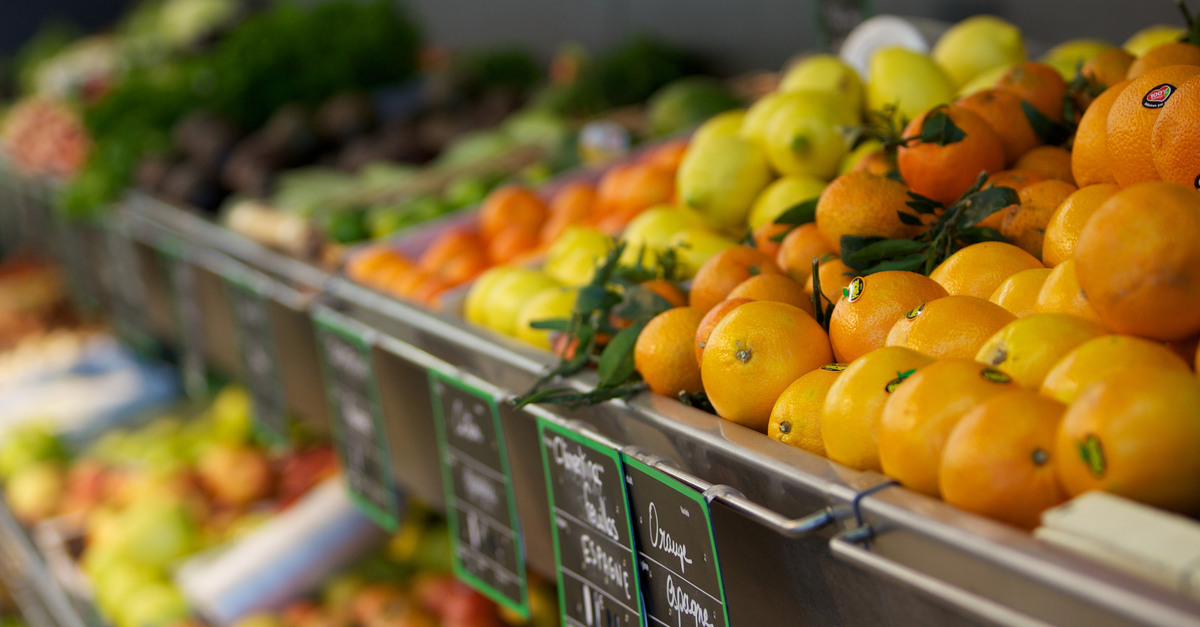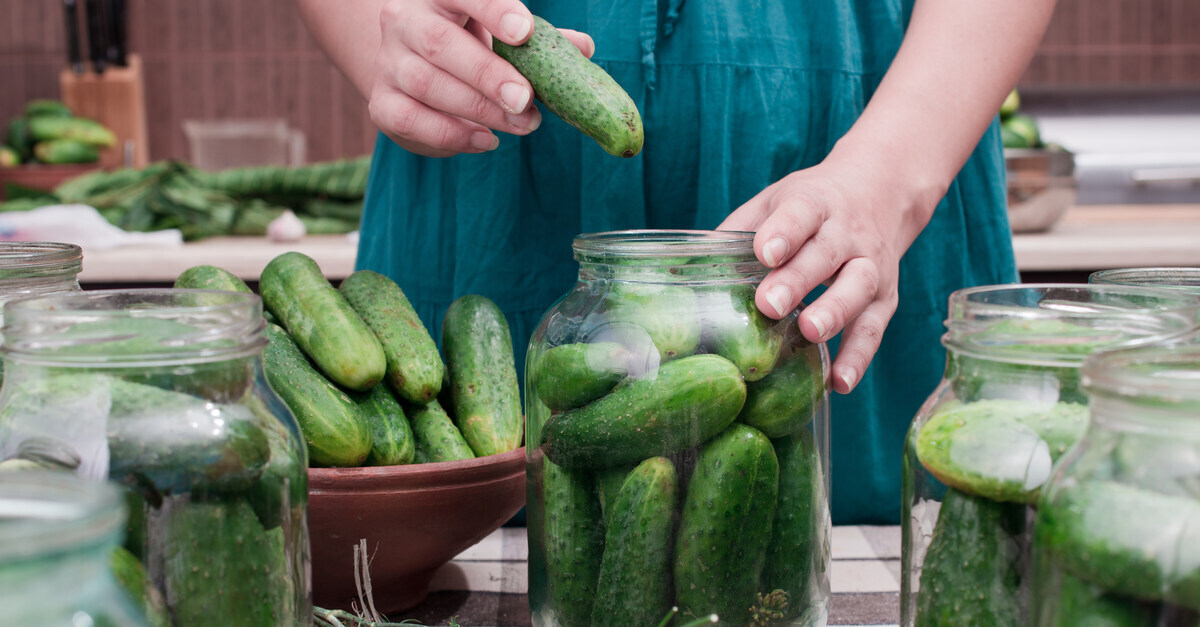Posted by Admin on Feb 20th 2025
10 Things To Know About Canning Fruits and Vegetables
Canning is a fulfilling and practical way to preserve the freshness of fruits and vegetables year-round. If you’re interested in getting into canning, you’ve come to the right place. Our guide below will explain some of the key things you need to know about canning fruits and vegetables, from what you’ll need to begin to the different canning methods to consider.
Why Canning is Worth a Try
First, why should people consider canning fresh produce in the first place? Canning offers a unique blend of practicality and creativity that makes it a rewarding experience for everyone. One of the biggest benefits is reducing food waste by turning surplus produce into delicious jams, pickles, or sauces that last for months. Canning is also a cost-effective way to enjoy seasonal fruits and vegetables throughout the year, saving money and trips to the grocery store.
Beyond practicality, canning is a fun, hands-on activity that can bring families and communities together, creating opportunities to share recipes, swap jars, and bond over age-old traditions. Plus, there's a certain pride and satisfaction in enjoying something you've made from scratch.
What To Know About Canning Produce
If you’re convinced and want to give canning a try, great! Let us help you start on the right foot with the important things to know about canning fruits and vegetables.
1. The Basics of Canning
First, let’s go over the basics of canning fresh produce. At its core, canning is the process of preserving food by creating a vacuum-sealed environment in jars to prevent spoilage. It involves heating the food and sealing it, effectively locking out bacteria and mold, which thrive on fresh produce.
The concept has been around since the early 19th century and remains a trusted method for safeguarding food. Once you understand the fundamentals, you’ll find the method is surprisingly simple—and majorly rewarding.
2. Canning Offers Numerous Health and Environmental Benefits
Beyond extending the life of your garden-fresh produce, canning provides numerous health and environmental benefits. By canning your fruits and vegetables, you can ensure you’re eating food free from artificial preservatives and high levels of added sugar or sodium—a common feature of commercially canned goods.
Environmentally, canning is a fantastic way to reduce food waste. Instead of letting surplus veggies wilt in your crisper, you can enjoy them for months to come. Plus, using reusable jars makes canning a sustainable choice compared to single-use packaging.
3. Essential Equipment for Canning
Before you start canning, you’ll first need to gather tools and supplies for your produce project. While canning doesn’t require a significant investment, a few key essentials will make the process easier and safer.
A large stockpot or dedicated canner, mason jars with two-piece lids, a jar lifter, and a funnel are non-negotiables. For more advanced recipes, you might need a pressure canner to safely handle low-acid foods. At Yeager’s Sporting Goods, we’ve got all the kitchen gadgets and supplies you need to can your fresh produce.
4. Know the Right Fruits and Veggies for Canning
Not all produce is ideal for canning. For the best results, use fresh, ripe fruits and vegetables. Opt for firm and unblemished selections, as bruises or over-ripeness can affect the final product’s taste and texture. Popular fruits and vegetables for canning include:
- Tomatoes
- Peaches
- Cucumbers
- Green beans
- Apples
- Berries
- Corn
Canning is a great way to preserve the flavors of your hard-earned harvest if you grow your own produce. Alternatively, buying from a farmer’s market can also provide excellent, high-quality options.

5. How To Prepare Produce for Canning
Preparation is everything when it comes to canning. Start by thoroughly washing and peeling (if required) your fruits or vegetables to remove dirt and bacteria. You’ll also need to cut or blanch some items beforehand.
Tomatoes, for instance, benefit from peeling since the skins can separate during canning, leaving an undesirable texture. Paying attention to this step ensures your canned goods are delicious and aesthetically pleasing.
6. The Difference Between Water Bath vs. Pressure Canning
Another thing to know about canning fruits and vegetables is the difference between water baths and pressure canning. Water bath canning is best for high-acid foods, such as apples, berries, pickles, and tomatoes. It involves submerging jars in boiling water to create a vacuum seal.
On the other hand, pressure canning is necessary for low-acidic fruits (bananas, melons, cantaloupe) and non-pickled vegetables (asparagus, zucchini, carrots). This method uses high-pressure steam to safely preserve items prone to bacteria growth. Selecting the right method ensures your preserves are safe and shelf-stable.
7. The Importance of pH in Canning
Acidity, measured by pH, determines the ideal canning method for the produce you’re preparing. Foods with a pH level below 4.6 are naturally high in acidity and safe to water-bath can, as acidity inhibits bacterial growth.
Low-acid foods—carrots, green beans, and squash—require pressure canning to reach the necessary internal temperature to kill bacteria. Home canners should always refer to trustworthy recipes that account for pH levels to keep food safe.
8. How To Avoid Spoilage
Safety during canning is non-negotiable. Always sterilize your jars and follow tested recipes to avoid contamination. Inspect your finished jars for proper seals; a jar lid that doesn’t “pop” when pressed is a sign that it has failed to seal correctly and should be refrigerated and consumed quickly.
Other signs of spoilage include discoloration, mold, or foul odors. Working carefully and following guidelines ensures that your canned goods remain safe and delicious.

9. You Can Get Creative with Canning Recipes
If you’re feeling adventurous, try experimenting with creative recipes to expand your canning repertoire. A peach and basil jam elevates ordinary toast, while pickled carrots with ginger provide a spicy crunch to any meal.
For an introduction to savory options, try a classic canned tomato sauce with garlic and herbs. Starting with simple recipes will build your confidence for more complex projects.
10. Consult Resources for Support
Becoming a skilled home canner doesn’t have to be a solo effort. Plenty of resources and communities can guide you on your canning journey.
Websites such as the USDA’s National Center for Home Food Preservation offer reliable recipes, safety guidelines, and downloadable resources. Online forums and local gardening clubs are excellent places to ask questions and swap recipes. Connecting with other canning enthusiasts makes the process even more enjoyable.
Keep Your Pantry Stocked with Yeager’s Sporting Goods
Canning fruits and vegetables is an excellent way to put fresh produce to use and stock your pantry with delicious fruits and veggies for months. Our helpful tips will help you start canning and have fun with your new produce project!
At Yeager’s Sporting Goods, our household department has plenty of supplies and equipment to help you start canning today. Stop by our store or browse our inventory online to start your canning journey!

